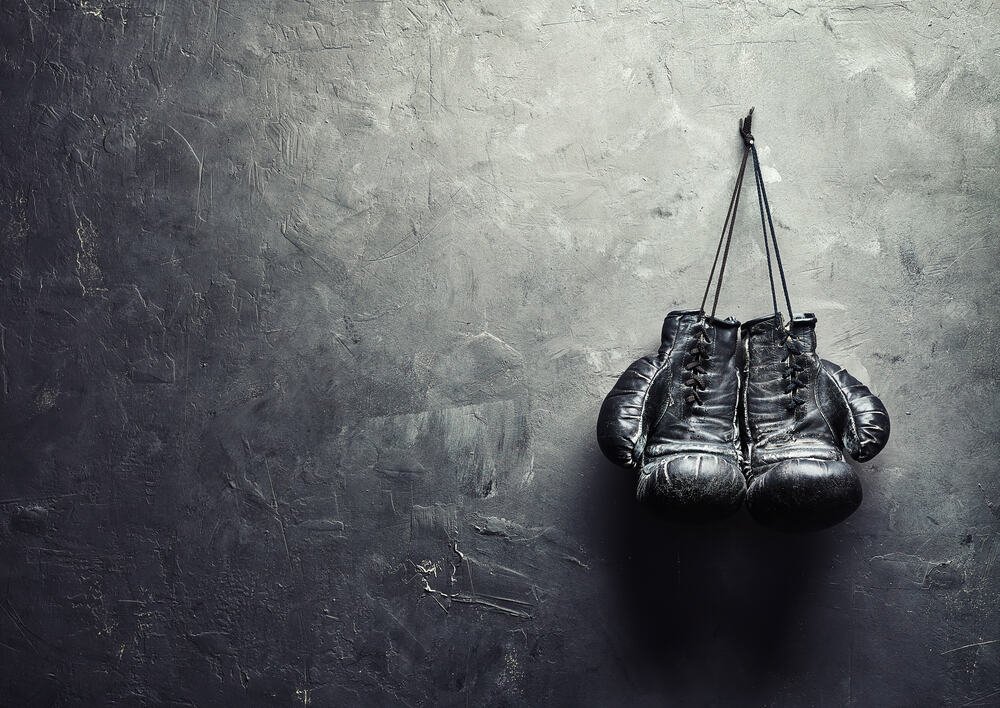
As you probably know already, boxing is a very old discipline. If you just recently started watching boxing fights, you might be wondering about the history of boxing, the most accomplished fighters, and how it all came together and became an organized sport. If this is your case, then this is the article for you!
I have been asked to write about the general history of boxing before, so I decided to satisfy that request today.
This article is by no means a comprehensive look into the most obscure historical boxing facts, but it’s a great way to get informed about the most significant historical events regarding boxing. Please enjoy!
The history of boxing can be divided into the following segments:
- Ancient Era
- Bare-Knuckle Boxing (1600s)
- The First Set of Rules (1700s)
- The London Price Ring Rules (1830s)
- Marquess Of Queensberry Rules (1860s)
- Outlawed in England & the U.S. (Late 1800s)
- The Birth of Modern Boxing (1930 – 1955)
- The Heavyweight Golden Era (1955 – 1975)
- The Fabulous Four (1980s)
- The Decline of Boxing (2000s)
Ancient Era
Before the sport was called boxing, people had always engaged in fights with their fists since antiquity. Some of these ancient people used to wrap their fists on some material, simulating boxing gloves. In fact, many historians have pointed out the fact that there is a lot of ancient artwork showing people facing in one vs. one duels with their fists.
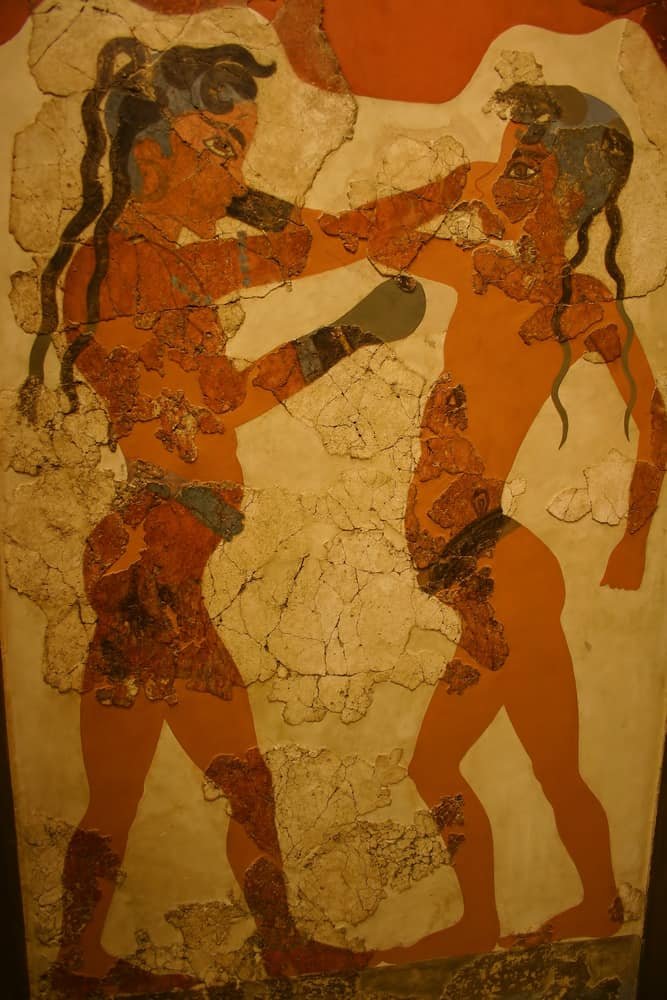
Possible, one of the earliest indications of boxing goes back to Ancient Egypt about 3000 BC. Also, a carved vase from the 1500 BC, found it what is now known as Greece, is, arguably, the first proof of the use of some sort of gloves during fights. Another evidence of boxing is the Egyptian relief sculpture from about 1350 BC, which depicted fighters, as well as spectators. All these are some of the many vases, paintings, and drawings that suggest that boxing took place in ancient times.
Boxing was very popular in Ancient Greece too, but there weren’t many rules in place at that time. In the 7th century B.C., for the first time, boxing was included in Ancient Greek Olympic games. One of the most unusual features of this type of boxing was the fact that there were no weight classes available. So, you could see a fight between a 120-pound fighter and a 180-pound one. Also, the fight didn’t have rounds, and it stopped when somebody died, or one of the fighters quit.
Boxing was eventually outlawed in Ancient Greece and Rome, and so it didn’t resurface until several centuries later on England.
Bare-Knuckle Boxing (1600s)
As I mentioned above, boxing eventually died down because of several reasons, including the church’s influence and an increased appreciation of weapons. But, eventually, a particular boxing style started making a comeback in the mid-1600s: Bare-Knuckle Boxing.
England was the primary country where bare-knuckle boxing took place, and at first, it was to settle grudges between persons. However, it grew to become a sort of pseudo sport in which fighters brawled for a determined purse, with spectators also betting on the outcome of the fight (quite similar to today’s prizefighting).
Nevertheless, unlike today’s boxing, there were minimal rules, at least at first. There were no weight classes, and fighters dueled until one of them could not continue. Also, you could punch downed opponents, kind of like MMA.
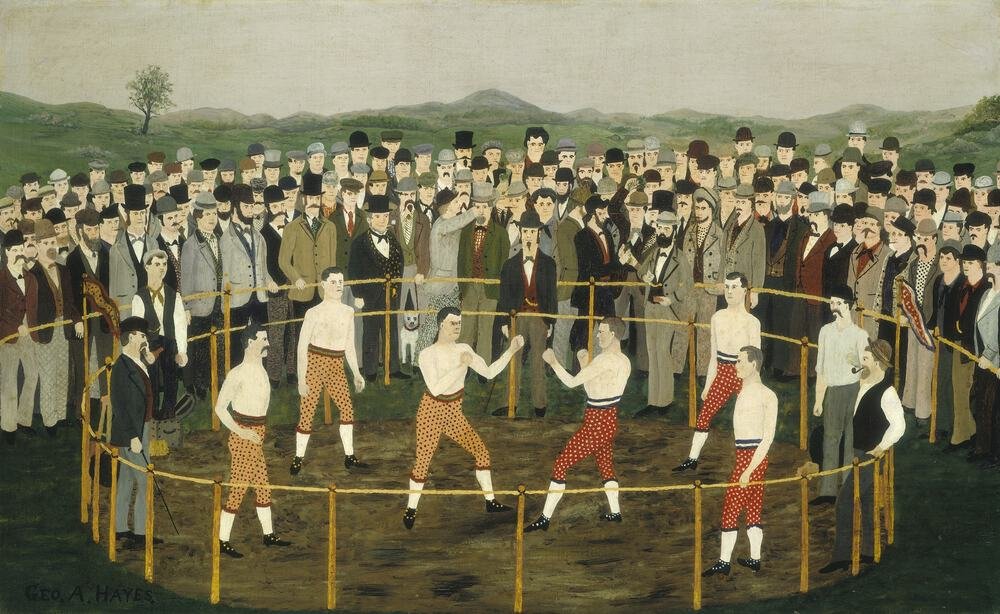
Notable boxers and other figures from this era include James Figgs, Jack Broughton, Jack Brownton, Daniel Mendoza, William ‘Bendigo’ Thompson, John’ Gentleman’ Jackson, and others.
The First Set of Rules (1700s)
Finally, John “Jack” Broughton, which was one of the champions of the time, developed his own set of rules which, ultimately, became the first set of official boxing rules ever.
The London Price Ring Rules (1830s)
Aside from Broughton’s rules, there were other sets of rules that boxers tried to introduce, both successfully and unsuccessfully. One of these was the London Prize Ring Rules, which took Broughton’s rules and added a few things. For example, the outlawing of headbutting, eye-gouging, and biting, which were fair game before that.
Marquess Of Queensberry Rules (1860s)
Bare-Knuckle Boxing went on for several decades without much change, with many notable boxers achieving some level of notoriety both in England and the United States. Eventually, one of the events that shaped modern boxing occurred: the Marquess of Queensberry Rules.
These were a new set of rules introduced by John Chambers, which was a standout athlete in England, for an amateur boxing championship in London. The rules were supported by the Marquess of Queensberry, and as a result, they were associated with him. These rules adopted several of the old regulations already in place, but, also added several clauses.
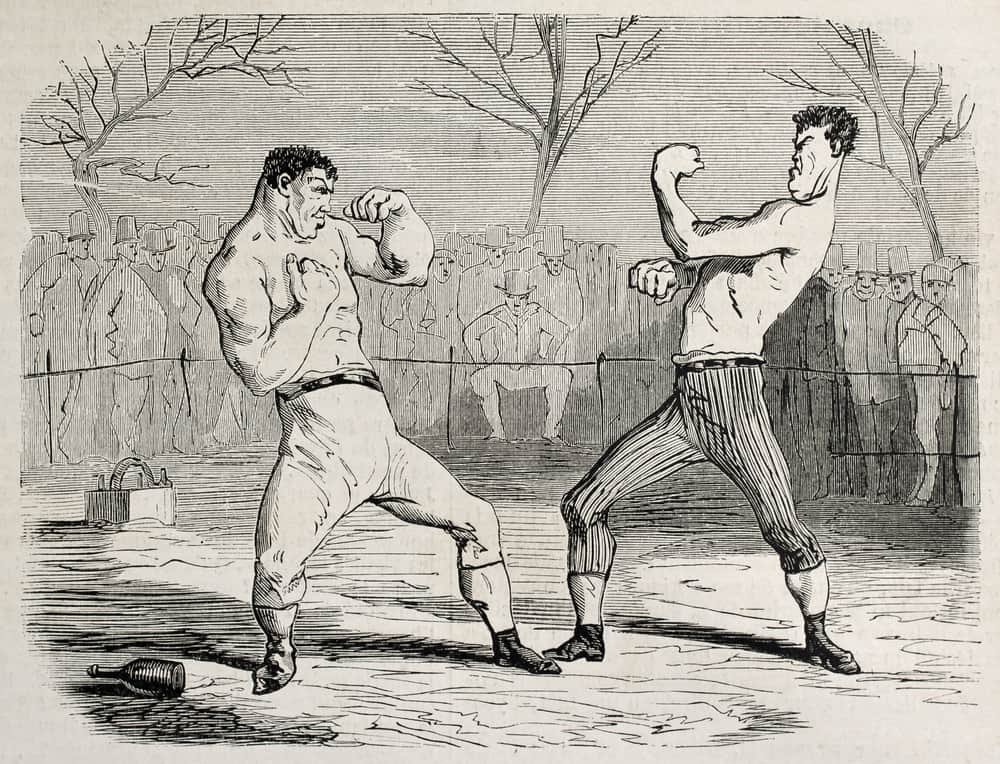
One of the rules that the Marquess of Queensberry Rules adopted was the usage of boxing gloves, which were used before, but they were never explicitly required. The introduction of the Marquess of Queensberry rules marks the beginning of modern boxing as we know it. Rules haven’t changed much since this set of rules.
Outlawed in England & the U.S. (the Late 1800s)
Boxers from both England and the United States eventually started using the rules, and the sport kept developing over the years. This growth was threatened by the fact that many groups were opposed to the sweet science because it was so associated with gambling and vices. Boxing was eventually outlawed again, but that didn’t dent the popularity of the sport. Competitions kept taking place in a secretive matter.
Even though boxing was outlawed, the sport never waned. In fact, many immigrants started getting into boxing to achieve respect, fame, and fortune. Boxing started gaining popularity with these marginalized groups.
The Birth of Modern Boxing (1930 – 1955)
The reputation of the sport, while still being associated with criminals and gambling, eventually gained some respect from authorities, which came to see it as a nobler pursuit than what they had usually thought at first. The athletic commissions eventually started trying to regulate the sport.
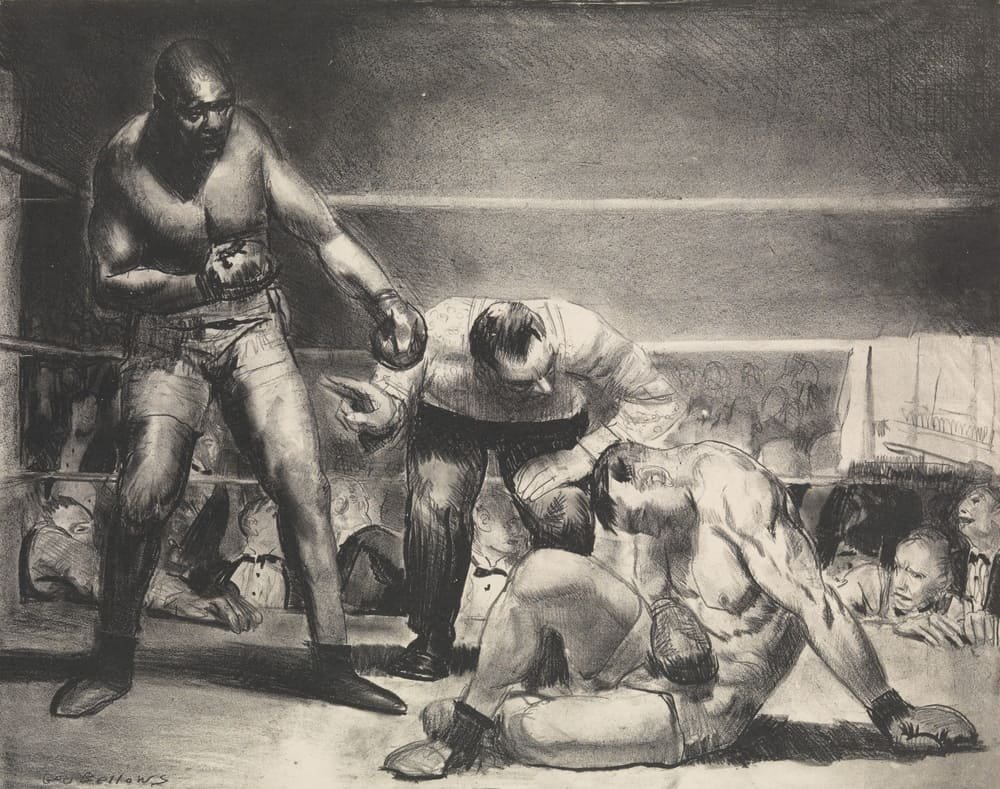
Notable boxers from this era include Jack Dempsey, Fireman Jim Flynn, Harry Lewis, Jack Johnson, among others.
As I mentioned before, boxing eventually started to be seen as a legitimate endeavor, and it gained a big fan base. Many boxers became household names, and boxing matches started to generate big money, something unheard before.
Boxers from all kinds of ethnic backgrounds started fighting for several reasons, including African and European immigrants, mainly the Irish. And as you probably knew already, there was a lot of shady stuff going on. Gambling was alive and well, and match-fixing was very common. Many fighters also worked for the mob and other criminal organizations, things that obviously didn’t help boxing’s reputation at the time.
Boxing started to get dominated by African American boxers, something that happened because of several reasons. The sport’s popularity among the middle class declined, and many historians suggest this is because of the lack of European American Champions. Joe Louis eventually became heavyweight champion in 1937, a seminal moment in African American sports history.
The Heavyweight Golden Era (1955 – 1975)
The sport enjoyed the most popularity in this era. The heavyweight division had the most notable fighters, including boxers such as Sonny Liston, Muhammad Ali, Joe Frazier, George Foreman, And Floyd Patterson. This era of boxing not only was notable because of the sheer popularity of the sport but because of the racial tensions in the USA, which were reflected in the ring.
Muhammad Ali
Arguably, the most famous boxer of the time, Muhammad Ali, decided to avoid the military draft, which was a crime at the time. This was a considerable influence among thousands of Americans that didn’t support the Vietnam war. The refusal to serve in Vietnam was something that really affected Ali’s career. He was barred from boxing for a few years, a decision that was overturned a few years later.
As a result, plus his outspoken persona, Ali became a popular figure across the country, as well as a symbol of the anti-war movement. He also because a symbol of the civil rights movement when he decided to join the Nation Of Islam (which he later left when he converted to Sunni Islam) an African American movement with Islamic influences.

The “Fight of the Century” (1971)
Ali often alienated certain segments of the populations, who labeled the rebellious Ali as a “punk”. One of his most famous opponents, Joe Frazier, was seen as Ali’s foil: an educated African American that didn’t “challenge the status quo”. Ali and Frazier faced each other on one of the biggest boxing fights ever: “The Fight Of The Century”, which Ali lost, the first loss of his career.
Ali eventually fought Frazier two more times, both times winning. His in-ring greatness and his refusal to serve in Vietnam, among other things, made Ali one of the greatest sportsmen ever.
The Fabulous Four (1980s)
Before the 80s, the most popular division was definitely the heavyweight, but after that period, several divisions gained some popularity among the fans.
One of these was the middleweight division, which was chock full of exciting fighters. Most notable was the “fabulous four“, which was a group of boxers who fought each other during the 80s and are considered to be among the greatest of all time. These four boxers were Roberto Duran, Marvin Hagler, Thomas Hearns, and Sugar Ray Leonard.
Mancini vs. Kim (1982)
Also, a very significant fight which ended in tragedy was the fight between Ray Mancini, the lightweight champion at the time, and Kim Duk-Koo, a South Korean aspiring for the title. Mancini won the fight in the 14th round by TKO. A few moments after this, Kim collapsed and lost consciousness. He then passed away four days later.
This tragic death sparked changes in the boxing world . First of all, a boxing match was reduced from a 15 round maximum to 12 rounds, and the standing eight count was introduced. Also, several extra health checks were implemented, such as brain and heart tests, which weren’t standard practice before.
All-Around Boxers (1990s)
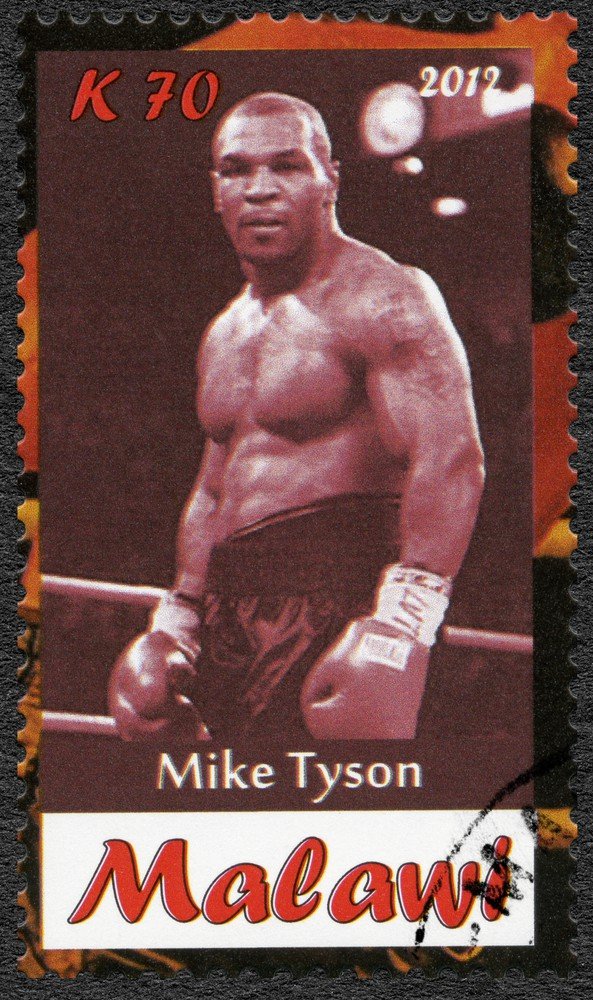
Boxing still enjoyed a great deal of popularity in this period, but not as much as in the 60s and 70s. Notable boxers from this era included Mike Tyson, Naseem Hamed, Julio Cesar Chavez, Marco Antonio Barrera, Evander Holyfield, Lennox Lewis, Roy Jones Jr, and Pernell Whittaker.
Also, one of the most celebrated boxers that started fighting in this era includes Floyd Mayweather Jr., who had his first pro bout in 1996.
Many fighters and fans alike agreed that the 90s was the era when boxing popularity started to decline. Many attribute this to the growing popularity of other sports, while others believed that the rise of the UFC contributed to the decline.
The Decline of Boxing (2000s)
As the 2000s came, boxing started losing popularity to MMA. The UFC mixed style appealed to many young people, many of whom were turned off by traditional boxing. While there were some excellent boxers on this era, such as Oscar de la Hoya, Manny Pacquiao, and Floyd Mayweather, most of the other elite boxers failed to capture the public’s interest.
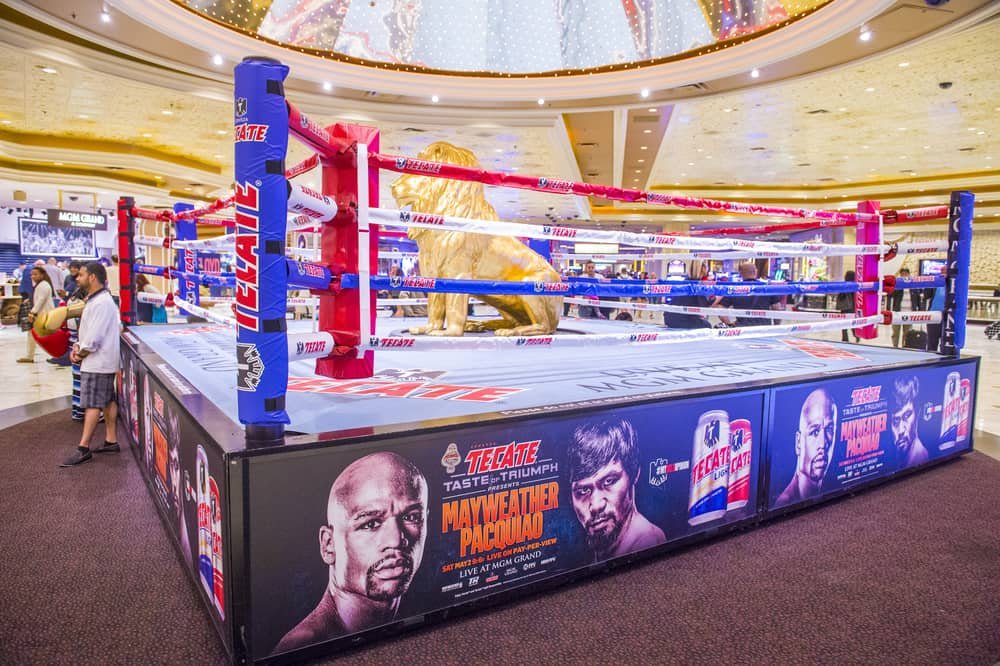
Also, one of the most interesting bits of this part of boxing history was the fact that the Heavyweight division suffered a notable decline in popularity. The heavyweights had long been among the most popular boxers, but the lack of talent on the division combined with a very competitive welterweight class contributed to that decline.
Today
While the sport has lost some popularity to MMA, fans of the sport are optimistic on the direction boxing is going. It is slowly becoming popular again, especially across different parts of Europe. Several Eastern European prospects are rising through the ranks, and many of these boxers fight a very aggressive, almost Mexican style of boxing.
